Akers Monthly – February 2024
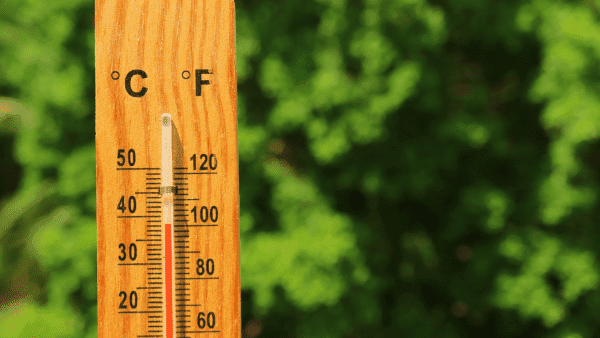
Summer Advice
This last month we have seen and helped treat so many pest, weed and disease problems that are popping up, so it is time for a refresh on how to spot and identify these common issues and how to help your lawns get back to looking happy and healthy.
Common Lawn Problems This Season
Black Beetle
Black Beetle is a common pest that is usually present during the warmer weather between September to March, and after heavy rains. They can lay between 6-12 eggs that begin hatching when soil temperatures increase. With soil temperatures increasing due to the warm summer weather, as well as the bouts of rain we have had through the season, there’s no doubting why they have emerged wreaking havoc.
As the larvae grow, they travel through the soil, feeding on lawn and plant roots. This creates patches and trails of damaged or dead lawn that will continue to increase in size as the pest grows.

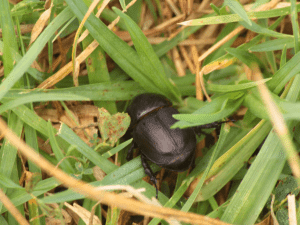
Black Beetle Larvae Adult Black Beetle
 Black Beetle Damage
Black Beetle Damage
Testing:
These tests are designed to encourage Black Beetle to come out of the soil and onto the surface of the lawn.
- Lay a wet towel, hessian bag or piece of carpet on the lawn overnight. In the morning, lift it up and see if any beetles are enjoying the moisture underneath it.
- Take a bucket of soapy water and pour it over part of an affected area. If there are any beetles or grubs in that area they will usually come to the surface after about 10 minutes. This test is best done at dawn or dusk when they are most likely to be active.
- Oddly enough, sometimes the best place to look to see if you have any is by looking under your dog’s poo!
Please note that if you do not find results after one test it does not mean you are pest free as they could be active in other areas of your lawn. Be sure to test different areas before making a conclusion.
Prevention & Treatment:
One of the best and most effective insecticides on the market is Acelepryn. It is safe for all lawn types, leaves a residual effect for up to six months, leaves minimal impact on the environment and has low toxicity to most non-target animals such as worms, fish, birds, and bees.
As a preventative measure we recommend applying Acelepryn every six months to provide year-round protection. As a treatment Acelepryn is most effective when applied in September/October, March/April, and at the first sign of beetle infestation.
Acelepryn is available to purchase as a granule in 4kg or 10kg, or as a liquid. Liquids are great to use if you have pets on your property, as they soak quickly into the soil leaving nothing on the surface.
Other fast-acting insecticide products that you can use to treat Black Beetle are:
Lawn Solutions Grub Guard and Yates Grub Kill & Protect.
It is important to apply treatment as soon as possible to avoid any more damage! The best time to apply beetle/grub treatments is late afternoon/dusk, and always follow with some water.
Fungus
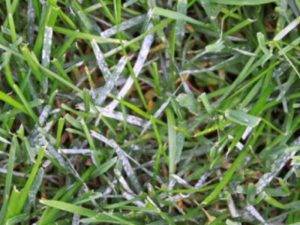
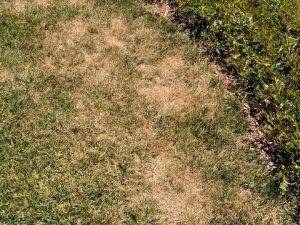
Fungus is usually caused by poor grass health, overwatering, poor drainage, or soil compaction. It can be found in warm/humid or cool/damp conditions, and particularly under trees or where water is pooling.
What to look out for:
- Patches or rings that are white, yellow, or brown that grow in diameter
- Irregular discoloration or texture
- Coloured spots on leaf blades or stems
- Powdery coatings
- Thinned out areas, or areas of wet/slimy looking grass
- A group of mushrooms in the shape of a ‘fairy ring’
Prevention & control of small fungus problems:
- Refrain from watering in the evening and instead water in the morning to allow the area to dry and disperse during the day.
- Do long, deep, less frequent waters rather than short frequent waters.
- Create less shade (if possible) by cutting back your trees and hedges regularly.
- Fertilise every 2-3 months alternating between granular and liquid.
- Remove thatch build-ups, and regularly aerate your lawn.
Treatment:
If you have a larger fungus problem the best approach is to apply a fungicide, as well as doing the prevention methods above. We recommend using Impala Fungicide as it attacks and controls many different turf diseases at multiple stages of development. Be sure to read product label for individual disease application methods.
Other fungicide products that can be used on your lawn or gardens are Yates Mancozeb, and Yates Tomato & Vegetable Dust.
Dog Wee Spots
Dog urine spots are frequently mistaken for fungus due to their patchy and off-colour appearance.
Some dogs have an increased amount of nitrogen in their urine that overdoses the leaf and causes the lawn to burn. Urine burn usually presents as small, rounded areas or lines that are yellow or orange, appearing where your dog regularly goes to wee.

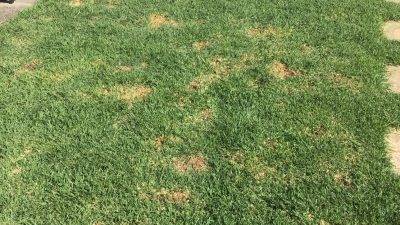
What can I do to help lessen urine burn occurring?
- Water the area your dog has urinated on as soon as possible to dilute it. This may be difficult for every wee, but doing it as often as you can will help.
- Encourage your dog to drink more water.
- Purchase Dog Rocks – they help to filter out impurities in the water that can cause the burning. Unfortunately, they are not guaranteed to work for every dog.
- Train your dog to wee in specific spots to minimise the affected areas.
- Ensure your dog has a high-quality and well-balanced diet, as this can help reduce the amount of nitrogen concentrate.
How do I fix damaged areas?
Once your lawn has urine burnt areas they may struggle to grow back. To help recovery we recommend raking out the dead plant material and adding a small amount of top-dressing mix as the clean soil can promote lawn growth. You can also add some lime to help reduce the acidity in the soil caused by the urine. Combined with regular watering and mowing this will help your damaged patches grow back over in no time!
Weeds
While a strong, healthy lawn may diminish your chances of weeds, there are occasionally ones that sneak in. When they appear it is important to act early to stop them spreading. Choice of treatment depends on the weed type, as each one grows and needs to be treated differently.
For Broadleaf weeds we recommend using Bow and Arrow, Lawn Solutions All Purpose Weed Control, or Amgrow Bin-Die.
For seasonal weeds we recommend using Monument Herbicide or ProForce Duke 100 WG Herbicide. However, the best way to help prevent seasonal weeds is to apply a pre-emergent herbicide in autumn and spring to help prevent the seeds from germinating. While Pre-emergents help stop weeds from emerging, they do not target already grown weeds. We recommend using Oxafert, PendiPro, or Freehand, or Spartan. It is important to pick the right product for your lawn type, as some may not be suitable.
Don’t want to get your hands dirty?
We can treat your lawn for you, give us call to find out how we can help!
Understanding Lawns Seeding
Kikuyu, Buffalo and Couch lawns all naturally go to seed as part of their growing cycle. This is particularly common during spring and summer, and as a stress response. Seeds can indicate that your lawn may not be getting enough water, or you have left it grow too long between mows.
Regular mowing, proper fertilisation, and adequate watering can help manage excessive seeding and keep your lawn looking neat.
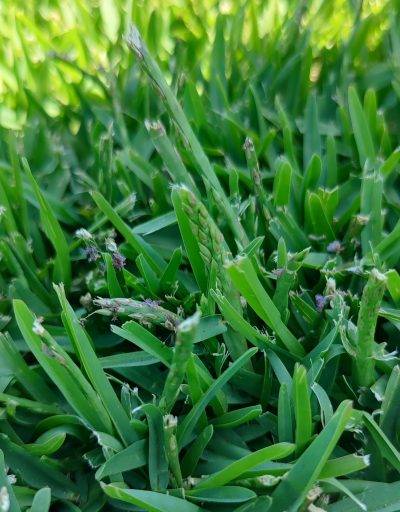

Buffalo Couch/Bermuda
 Kikuyu
Kikuyu
Kelp – Your Lawn’s Elixer
Kelp is a secret weapon in lawn care, especially during summer. It is rich in nutrients and growth hormones, vital for root development and enhancing overall lawn health. Kelp helps improve drought resistance and provides essential nutrients.
For best results, apply Akers Organic Based Liquid Kelp every 4-6 weeks. It is best applied in early morning or late afternoon to prevent evaporation and ensure maximum absorption.
Akers Liquid Kelp is available for purchase instore and online (see below for special offer!), or available as a spray treatment with our Follow Up Service.
Product of the Month
Kelp isn’t just a liquid fertiliser but a growth stimulant as well! It is safe to use not only on your lawns but your gardens/veg as well! (not recommended for use on native plants.)
It has the potential to:
Boost root growth
Improve drought stress
Overcome nutrient deficiencies
Stimulate cell division
Improve fruit production
On sale until 29/2/24
Dal’s Gardening Tips
- For your veggie patch, consider heat-tolerant options like Tomatoes, Chillies, Cucumbers and Zucchinis.
- Aphids and spider mite thrive in warm weather. Inspect your plants regularly, especially the underside of leaves.
- Roses in humid weather tend to suffer from to a range of fungal diseases such as Black Spot, Powdery Mildew and Rust. Yates Rose Gun is an excellent product to help this.
- Focus on deep watering rather than frequent shallow watering to promote strong root growth. Early morning is the ideal time to water, as it reduces evaporation loss.
Do you have any lawn or garden questions?
We want to hear from you!
Send us any questions or topics you want covered and they may get featured in our next Akers Monthly!
As always, thank you for your support!
Dal, Jacqi and the Akers of Lawn team

